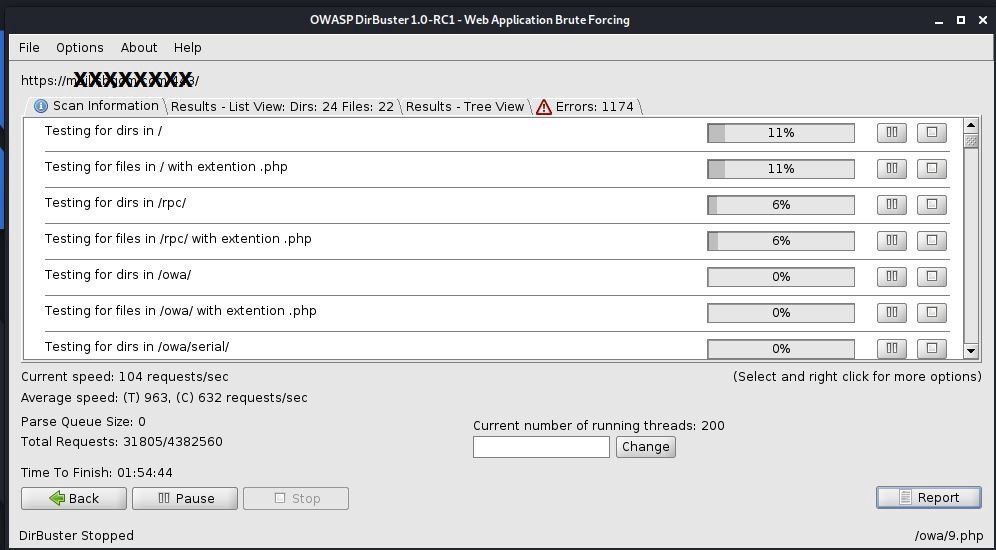What is DirBuster?
DirBuster is a file/directory penetration testing tool with a Graphic User Interface (GUI) that is used to brute force directories and file names on web application servers.
DirBuster is written in Java and programmed by the members of the OWASP community.
DirBuster is pre-installed into Kali Linux, so as long as you have your Kali system set up, you should be good to go.
How to Use DirBuster?
Step 1 Run DirBuster
Let’s start by opening Kali and then opening DirBuster. We can find DirBuster at Applications -> Kali Linux -> Web Applications -> Web Crawlers -> dirbuster.
Step 2 Set Target
The first step is to type in the name of the website we want to scan. Let’s go back to our friends at SANS, one of the world’s leading IT security training and consulting firms. Simply type in the URL of the site you want to scan and the port number (usually 80 for HTTP and 443 for HTTPS). In this case, we will scan port 80.





















